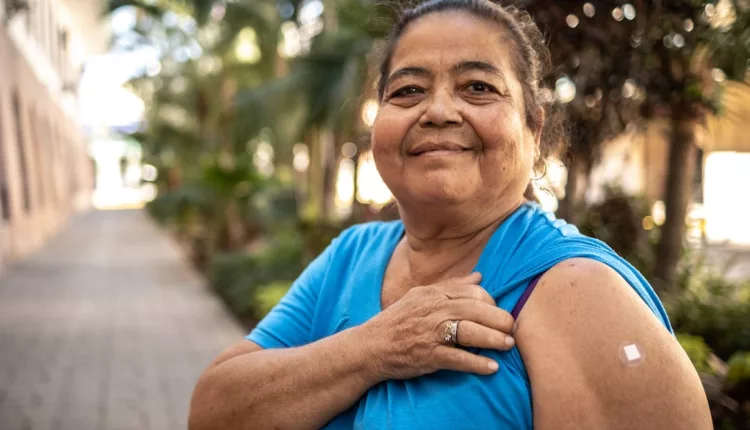
Aussie Policy Revamp Could Boost Vaccinations & Save Lives
TL/DR –
Millions of high-risk older Australians are missing out on recommended vaccinations for diseases such as COVID, the flu, pneumococcal disease, and shingles. The likelihood of someone being vaccinated changes depending on where they live, their birthplace, the language they speak at home, and their income. The article suggests implementing a National Vaccination Agreement between federal and state governments, setting ambitious targets for adult vaccines to increase the vaccination rate, especially in high-risk groups.
Vaccination Crucial to Prevent Hospitalisations in Australia
Annually, vaccines prevent thousands of deaths and hospitalisations in Australia. However, millions of high-risk older Australians fail to receive recommended vaccinations against COVID, the flu, pneumococcal disease, and shingles. Migrant communities, rural areas and poorer suburbs are typically overlooked.
A Grattan report suggests that a policy reset encouraging vaccination could save lives and lessen the burden on hospitals.
Adult Vaccines Reduce Risk of Serious Illness
Vaccines significantly decrease the risk of hospitalisation and serious illness, often by more than half. They are extremely safe for the individuals recommended to receive them.
High-Risk Individuals Miss Out on Vaccination
Despite the importance of vaccinations, many high-risk Australians are not getting inoculated. For instance, only 60% of high-risk Australians received the flu vaccine before winter this year. Meanwhile, only 38% had a COVID vaccination in the last six months.
Vaccination rates for other diseases are also low. Among Australians in their 70s, less than half are vaccinated against shingles, and only one in five against pneumococcal disease.
Vaccination Rates Vary Based on Location and Language
Vaccination rates vary greatly based on factors such as location, birth place, home language, and income. For example, the COVID vaccination rate for high-risk Aboriginal and Torres Strait Islander adults was only 25% at the start of winter this year. Similarly, for the over 750,000 high-risk adults who do not speak English at home, the COVID vaccination rate is below 20%.
Setting Ambitious Vaccination Targets
Australia needs a vaccination reset. A new National Vaccination Agreement between the federal and state governments should include ambitious targets for adult vaccines. This could build on the success of targets set for childhood and adolescent vaccination. The Australian Technical Advisory Group on Immunisation (ATAGI) should be tasked with advising on vaccination targets for COVID, flu, pneumococcal and shingles for all high-risk older adults.
Addressing Barriers to Vaccination
Vaccination should be more accessible and easier to understand to increase overall uptake. The federal government should introduce vaccination “surges” in the lead-up to winter, similar to European countries. During these surges, high-risk individuals should be allowed to get vaccinated regardless of recent infection or injection.
Moreover, targeted policies are needed for people who do not get vaccinated due to language barriers or residing in aged care. Initiatives such as vaccination events in aged care and disability care homes, workforce training for culturally appropriate care, and provision of interpreters could be coordinated by Primary Health Networks.
Ongoing funding should be provided for tailored programs to reach people who are not comfortable accessing mainstream health care. These programs should be designed and delivered with the communities they are trying to reach.
With the aim of closing the vaccination gap, adult vaccines should be given more prominence in Australia’s whole-of-life vaccination strategy for the health and safety of the community.
—
Read More Health & Wellness News ; US News
